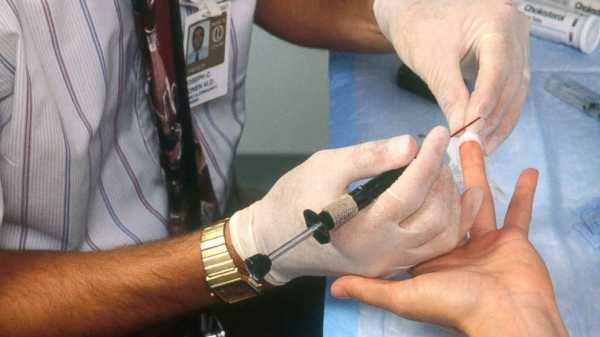
Researchers from Harvard looked at data from the surveys compiled by the U.S. Centers for Disease Control and Prevention between 1999 and 2014 called NHANES, which uses a nationally representative health database of over 200 million people.
They wanted to know: How many people reported having their cholesterol level screened? How many were using statins — medications that lower cholesterol?
Cholesterol screening is important, since levels of high cholesterol can increase the risk of having a heart attack.
In the U.S., approximately 14 million adults have severe dyslipidemia –- high levels of the unhealthy LDL cholesterol. Of that 14 million, 1 million have familial hyperlipidemia (FH), a genetic condition that causes very high levels of LDL cholesterol.
Researchers compared adults with severe dyslipidemia and those with FH to the general population.
Overall, screening for high cholesterol happened more than 80 percent of the time in adults with either FH or severe dyslipidemia — and high-dose statins were prescribed 30 percent of the time for FH and 37 percent of the time for severe dyslipidemia.
But there seemed to be less than ideal follow-through: over the entire time of the study, only 52 percent of adults with FH and 38 percent of adults with severe dyslipidemia were actually taking the statin.
This is, however, more than in the past. For the year 2000, less than a third of people with severe dyslipidemia were taking their statins. But for the year 2014, that had grown to 48 percent.
The patients at highest risk for lack of screening are younger adults and those without enough health care coverage.
Americans are less likely to be aware of their cholesterol levels if they are younger, lack a usual source of health care, live in poverty, have diabetes, or are obese. For example, adults over 60 years were screened more than 85 percent of the time, and over half were taking statins. But those aged 20 to 39 with high cholesterol were only screened 60 percent of the time; only 13 percent were on a statin medication.
The study was limited in some ways. The information on screening, awareness of the cholesterol and treatments were self-reported by patients. The authors also did not have information about whether patients were choosing not to take the statins or whether doctors were prescribing them less.
This study also only addressed adults over the age of 20 who had been diagnosed with dyslipidemia. Lastly, the specific LDL cholesterol values were missing for more than half of the participants, meaning it’s possible that some of them may have been misclassified as having severe dyslipidemia.
But, overall, the study did show a clear distinction: although screening may be improving, the majority of patients with very high cholesterol are not taking statin medication.
Sourse: abcnews.go.com






